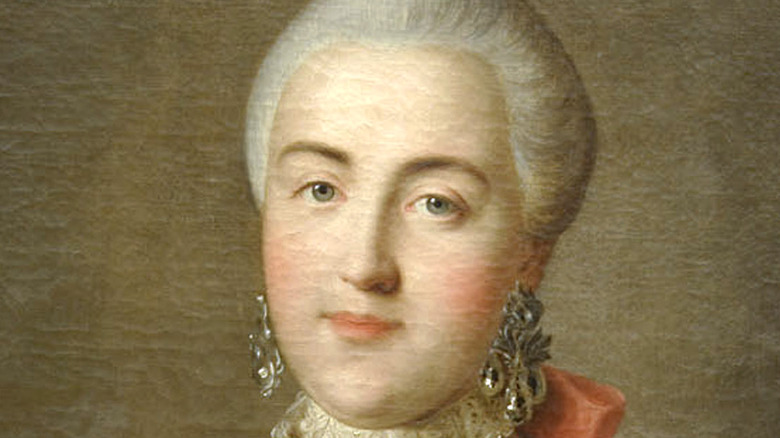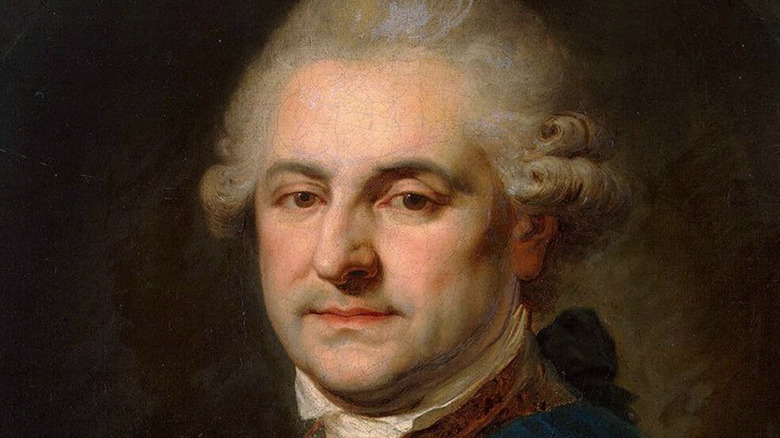The Rewards That Came With Being Catherine The Great's Lover
During her three decades as Russia's female ruler — the longest reign of a woman in Russia – Catherine the Great enhanced her country greatly (via Live Science). According to Biography, she expanded the Russian empire, improved education, and was a supporter of the arts. Catherine was also a successful military leader. However, all of her accomplishments tend to get overshadowed by her numerous love affairs.
Born Princess Sophie of Prussia, Catherine was married off at age 16 to future Emperor Peter III. Per Esquire, the marriage was unhappy and she took lovers to make up for it; many believe her three children were not fathered by Peter. One lover, Grigory Orlov, later helped Catherine overthrow her husband.
Peter was arrested and killed, with Catherine subsequently taking over the throne. Orlov, however, was one of many. Catherine was said to have anywhere between 12 and 22 lovers throughout her lifetime. Some historians disagree; an article from Vanity Fair states she was a serial monogamist and was never in a relationship with more than one man at a time. She never remarried and instead aligned herself with wealthy and powerful men. This had its perks, as Catherine was said to have been incredibly generous during and after relationships ended (per History).
One of Catherine's lovers became a king
According to Esquire, Catherine gave extravagant parting gifts to her lovers, including lands, titles, palaces, and more. One of them received 1,000 indentured servants. History states that Catherine and her paramours always ended things on good terms. Unlike other royals, she would not dispose of them cruelly; Catherine ensured their financial well-being (via Vanity Fair). One of her earliest lovers and alleged father of one of her children was Stanislaw Poniatowski. Long after their romance had ended, Catherine gave her support for him to become king of Poland. According to author Kyra C. Kramer, Catherine provided both financial and military backing to Poniatowski.
It worked, and Poniatowski was crowned in 1764. As king, he began a series of reforms that were excessively liberal and strengthened Poland as an independent country. These policies felt like a betrayal to Catherine who later forced Poniatowski to abdicate the throne. Nonetheless, she gave him a pension and imprisoned him in a palace, where he lived comfortably until his death. Catherine herself died in her bed in 1796 at the age of 67 after suffering a stroke (via Live Science). For years, rumors persisted that she had died on the toilet or by engaging in a sexual act with a horse. Both, of course, were fabrications perpetrated by her enemies as an attack on her independence and power as a female leader.

